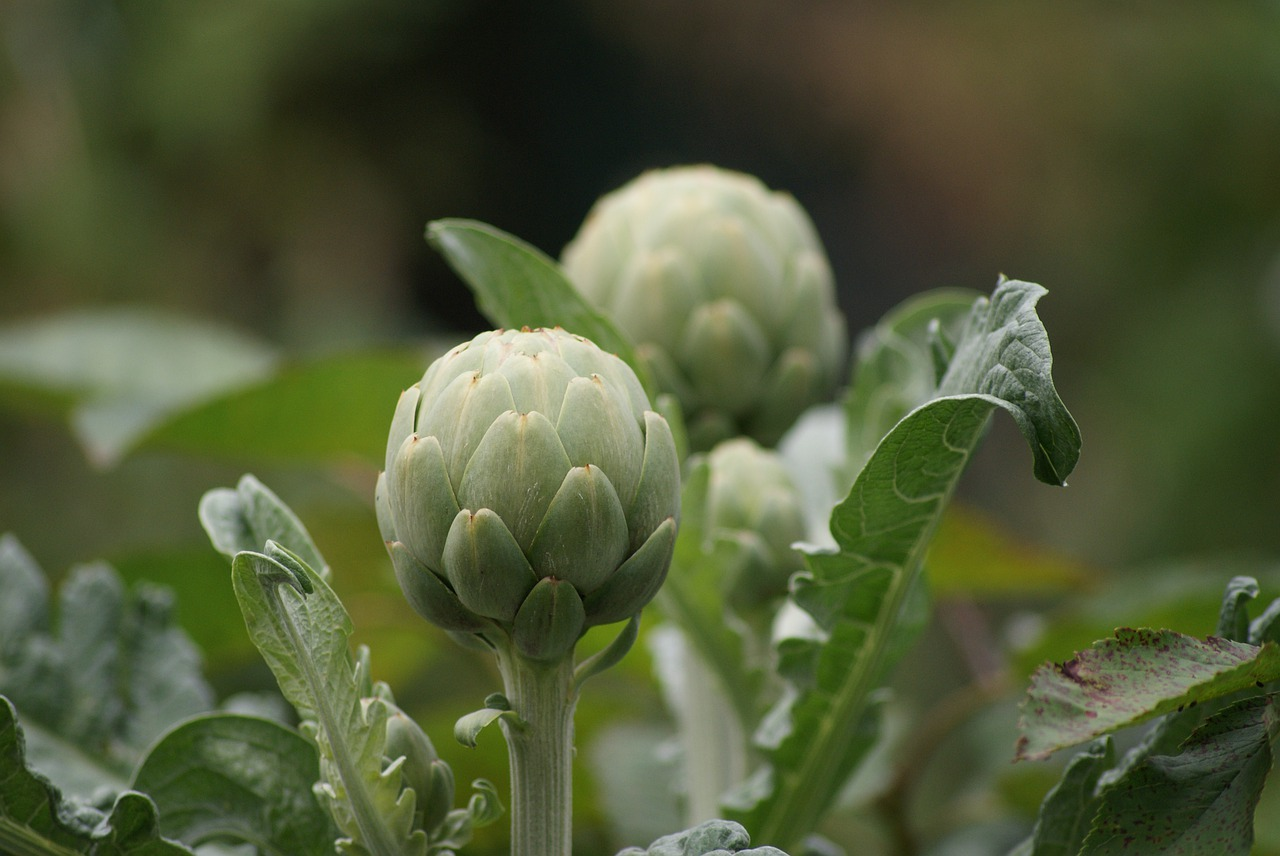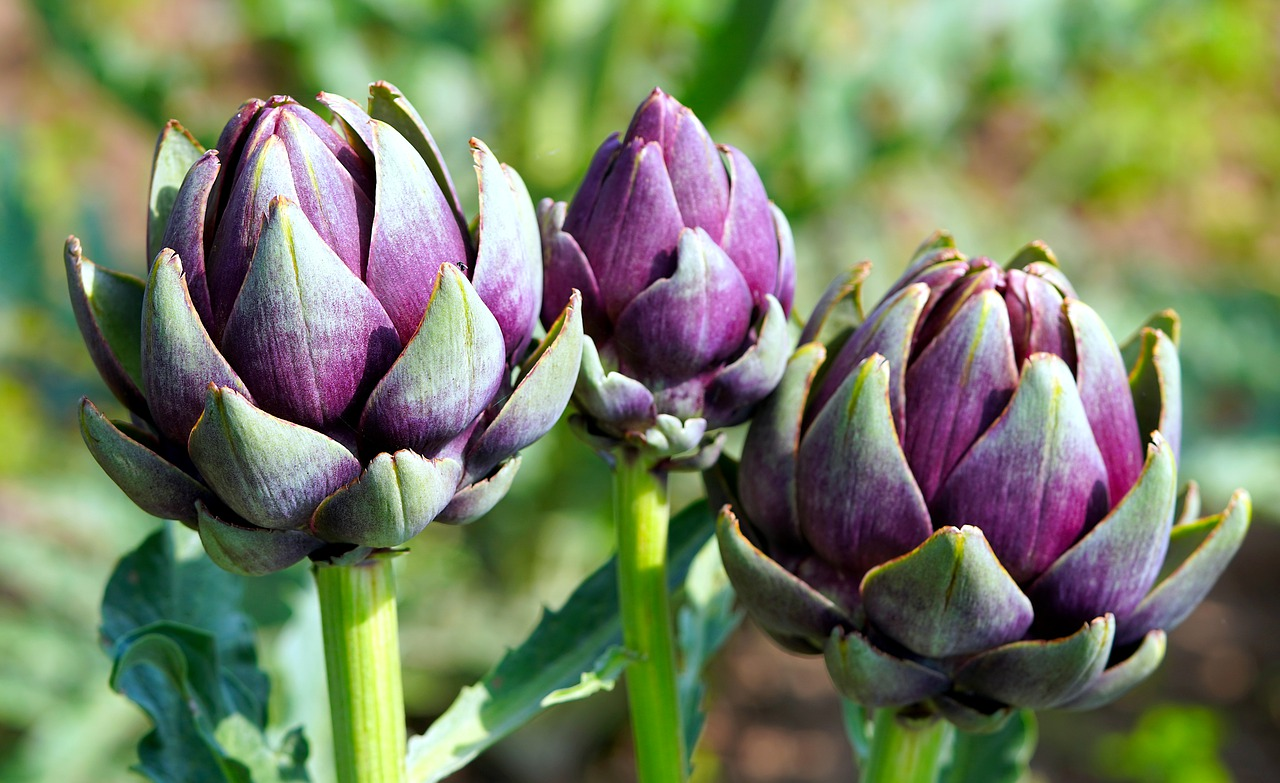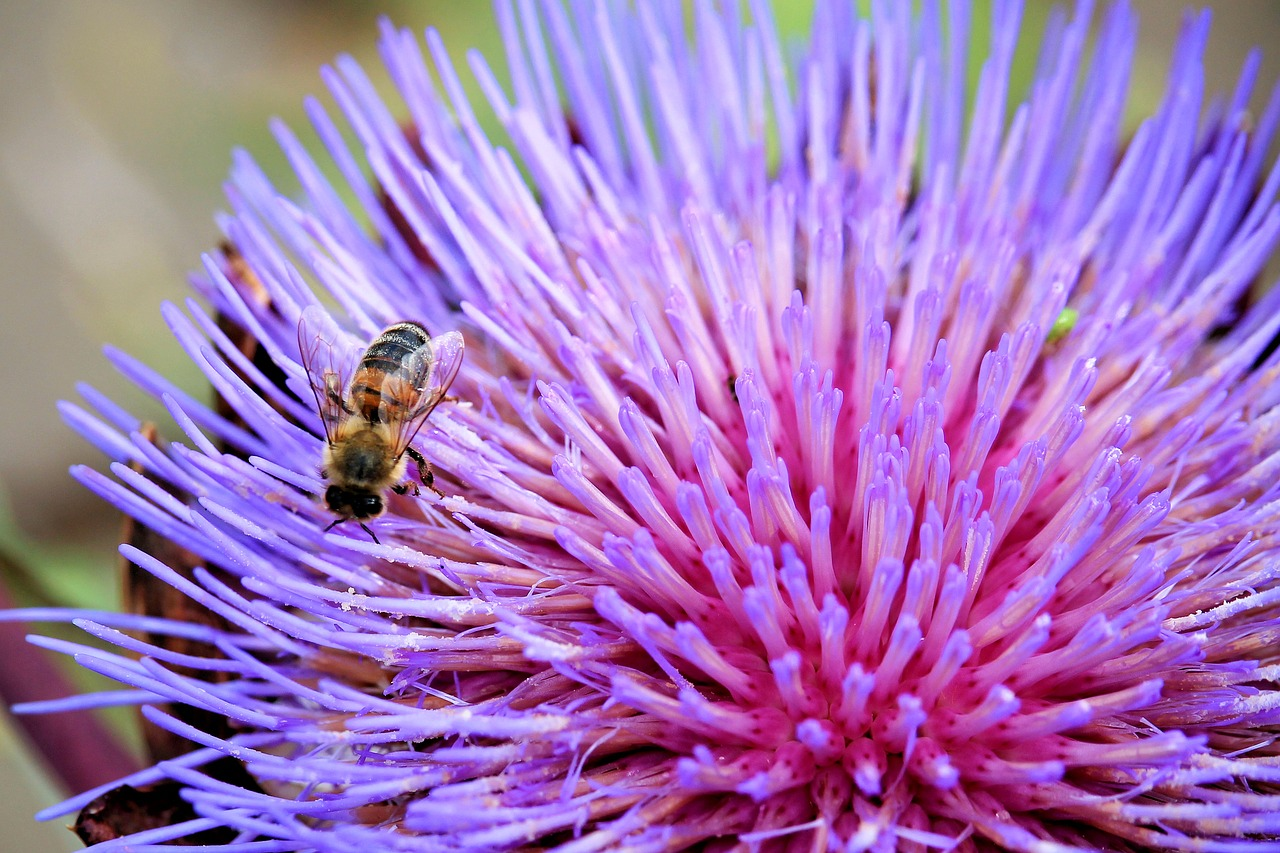Planting artichokes
An impressive plant
Artichokes are very popular with many gardeners due to their special appearance and delicate taste. They are not only popular in vegetable gardens, but also in ornamental gardens. The fragrant flowers also attract bees, bumblebees and other insects.
The right location

Artichoke plants need a lot of warmth and therefore require a wind-protected, full-sun location. They prefer to grow in well-fertilized soil, so prepare it with plenty of compost before planting. Waterlogging should be avoided at all costs, especially in winter. Once an artichoke has established itself, it can grow in this location for several years.
Caring for & fertilizing artichokes
Artichokes are heavy feeders and are very hungry for water and nutrients. A small handful of horn shavings per plant provides good long-term fertilization. During the season, you can top up with nettle slurry up to twice if necessary. Also make sure that your artichoke plants always have enough water available. The soil around the plants should never dry out, especially in the early stages. Mulch can help to keep the soil around the plant moist.
Harvesting artichokes

Artichoke buds are mainly harvested from August to September. Mature plants produce up to twelve buds per season. Harvest the buds while they are still closed and before the bracts start to turn purple. Start your harvest with the main flower so that the other flowers can continue to grow.
hansbenn on pixabay

